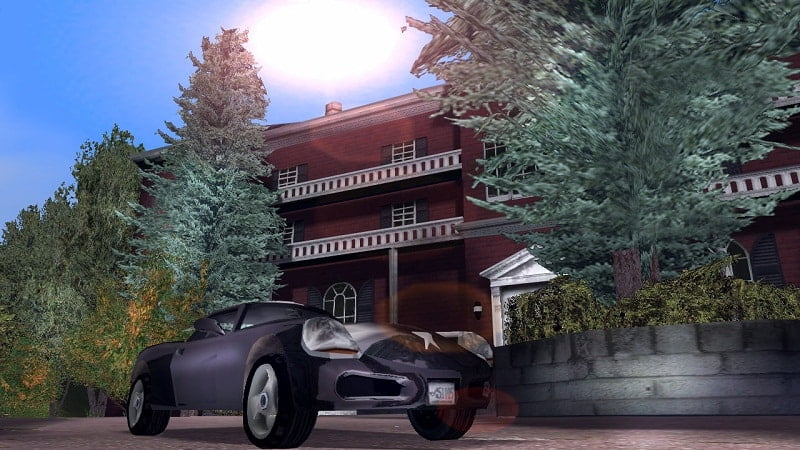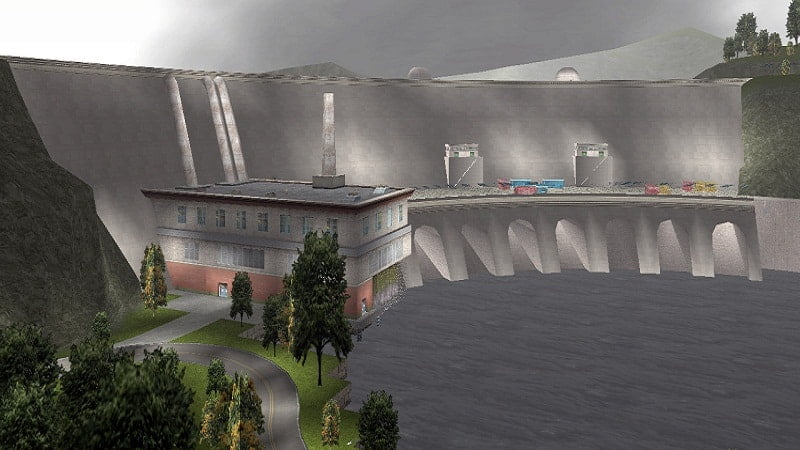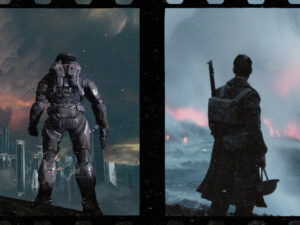Cut Scenes is Josh Wise’s regular column on the intersection between film and video games. This week, it’s Grand Theft Auto III vs. The Sopranos.
The gangster dream is a video game: pleasure without having to work, without having to worry about moral constraint; a world bound by a horizontal hierarchy of levels, one enforced and expressed with violence. Grand Theft Auto III is unmatched for sheer sublimity. Its simulacrum of not just violent acts, but of the cities and societies that contain them, is artful.
In the intro to The Sopranos, Tony Soprano drives through the Lincoln Tunnel and onto the Jersey Turnpike. As he drifts down the highway, the New York skyline silently holds court on the other side of his car windows. It lets you know this isn’t going to be set in New York like these things always are. This is industrial; it’s lonely and spacey; this is the branch of the mob you don’t see, its scions loitering in concrete lots passing up tribute to the absentee landlords across the shore.
By dint of its design, Grand Theft Auto III is the sort of game you have to behold with the right set of eyes. There isn’t any garish show of power here, the game content to let you drive however you’d like, with music or in silence. There is much communicated by way of geography and design, by way of what’s outside your car windows.

Shoreside Vale opens to you after the mission “A Drop in the Ocean,” but it isn’t until “Grand Theft Aero” that you’re tasked with taking a long drive from Staunton Island over the Shoreside Lift Bridge. On the Staunton side, a winding on-ramp takes you up over the water to Rockstar’s take on New Jersey, to the exurbs and edgelands; through Pike Creek, its commercial and industrial sectors a pastiche of Elizabeth; and out to Cedar Grove, the windy suburb and shorthand for North Caldwell, where the McMansions sigh against the chain-link fences around the Cochrane dam.

It speaks to the America that Rockstar skews. The trilogy didn’t survive the Bush administration, and it retreated from the commerce and consumption of America in the new millennium, to the glitz and the ghetto of the ‘80s and ‘90s. The Housers penned a litany of love letters to the mythic crime films of the 20th century. But whether it was escaping poverty one blockbuster set-piece at a time, or dealing death with punch lines set to pop music, Grand Theft Auto’s focus remained macro.
But here in GTA III there’s a glimpse of that industrial gloom, of warehouses and vacant loading bays like spent shell casings. It exposes the discarded scaffolding around the mob dream – a dream exemplified by the towers across the water in Staunton, the kind Tony Soprano was driving away from. There was always something sad and beautiful about Shoreside vale.

It’s no wonder that this particular mission is doled out not by the heavy-jowled Salvatore Leone through a pall of Puzo cigar smoke, but by an enigmatic magnate in an immaculate suit named Donald Love – as impassive as the skyscraper you find him in. The mission shifts to a construction site for a shootout between corporate and Gangland empires over the most depressing commodity, the one you drifted through just like Tony Soprano did: land.












